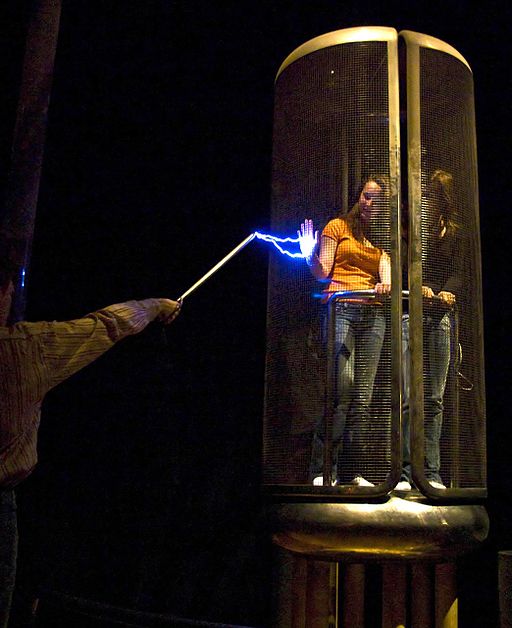The Most Promising Defense Against Militarized Drone Swarms
An EMP ray beam could disable an AI swarm like a can of bug spray against a swarm of antsWant to be scared about a use of artificial intelligence in the military? Watch the leftist video Slaughterbots or the beginning of the movie Angel Has Fallen starring drone-targeted Morgan Freeman. Swarms are hard to defeat. Kicking over an ant hill and stomping on most of the agents in a swarm doesn’t derail the ants’ collective mission. Come back in a week and the anthill is rebuilt. Likewise, if all of the agents in a drone swarm aren’t taken out, the drone swarm can still accomplish its mission. As I mention in The Case for Killer Robots, autonomous swarms of drones are among the scariest applications of AI in military weapons.

Russia has developed and tested military drone swarms. So has the United States military. General John Murray heads the recently formed US Army Futures Command. Gen Murray toured our lab at Baylor and is an impressive leader. He does not buy into Supply Side Academic’s paper count currency. He does not want to see a stack of scholarly papers university Deans like to count for purposes of promotions and salary increase. He wants to see useful concrete results from universities he funds. General Murray oversees the US Army’s swarm defense program. He concurs with The Case for Killer Robots that AI autonomy can be mandatory when required response times are too short. The US Air Forces’ Golden Horde drone swarm weapons and countermeasures program is another effort focused on drone swarms.
What’s a good way to defend against swarms of attacking drones? Taking out one drone at a time can be effective if a swarm isn’t loo large. Israel’s Iron Dome system has demonstrated this ability in combat. High energy lasers are another technology being developed to zap drones. One wonders, though, how they will perform on a foggy day.
But such one-on-one engagement will be ineffective for large swarms. Military experts warn of swarms of hundreds, thousands and even a million drones in an attack swarm. One possibility, drone-on-drone combat, will require both a commensurate defensive drone count and a high level technical sophistication. The defensive drones must figure out which enemy drone to attack and must do so quickly using autonomous AI technology.
There are other simpler defenses. Paul Scharre notes that simple chicken wire may stop some types of drone swarms. Along these lines, Israel has been experimenting with nets to catch and debilitate offensive drones.
The most effective method of combating an autonomous drone swarm may be use of electromagnetic pulses, or EMPs. EMPs can destroy electronics found in power stations, aircraft carriers, cars, communication systems and your cell phone. Most associate EMPs with thermonuclear bombs. But EMPs can also be launched from the equivalent of a massive antenna array. Broadcast TV stations launch an electromagnetic signal through the air that is converted by the receiving antenna into current. The current is then interpreted as audio and video. If a broadcast signal’s power is increased enough, every metal object in range becomes a receiving antenna. The metal in electronics becomes an antenna and the electronics is fried by the large induced currents. Broadcast TV stations can direct their signals so that, for example, most of their power is directed over densely populated cities to maximize viewership. Likewise, EMP cannons can be aimed to do harm only to intended targets.
An EMP pointed at a swarm could disable the whole swarm by frying the electronics in every drone. A big EMP explosion, on the other hand, is like setting off a bug-bomb in your house. Every insect dies. The EMP ray beam is like a can of bug spray aimed at the ants congregated around the partially eaten Snickers bar you dropped yesterday.
The Russian web site Avia.Pro recently bragged “Russia will become the only one in the world capable of combating a swarm of drones [using EMPs].” Forbes confirms the development of the Russian EMP ray beam. But the United States has been developing EMP defensive weapons for a long time so it looks like the US is ready.

The next logical step in the drone swarm arms race is protecting the drones from EMPs. This can be done by surrounding the drone electronics in a Faraday cage – a protective layer of metal. Will the added weight significantly diminish the effectiveness of drone swarm? Will further technology then be developed to counteract the Faraday cage? The back-and-forth arms race has been an escalating game of technology development throughout military history. It would be nice if we all just got along. But in the case of drones, the technology is cheap and easily adopted by adversarial governments like North Korea and Iran. Sadly, for purposes of survival and giving enemies pause, the race must continue.
